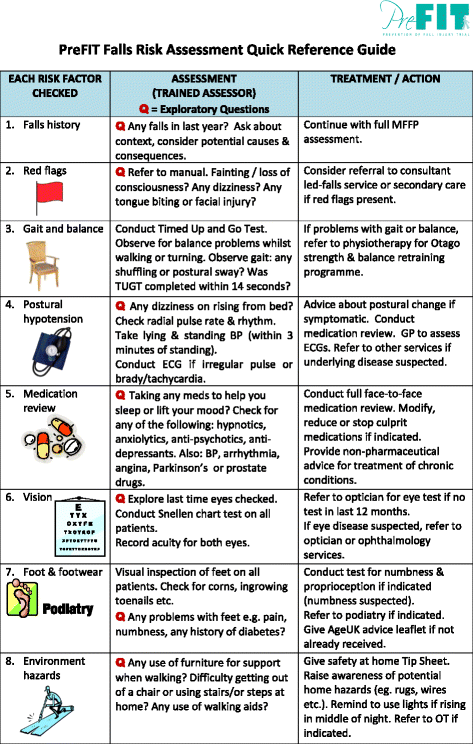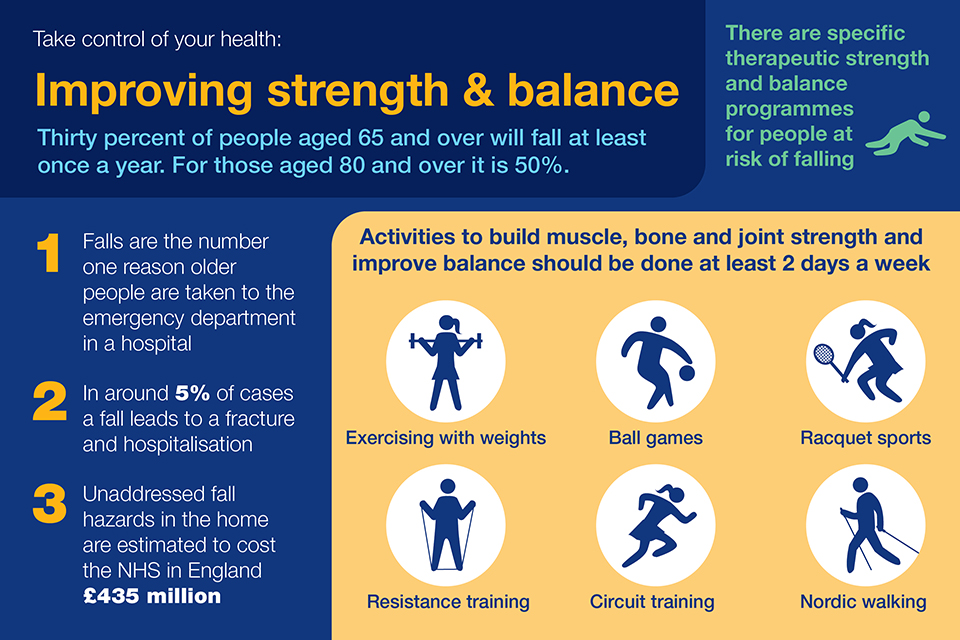Some Known Details About Dementia Fall Risk
Some Known Details About Dementia Fall Risk
Blog Article
Some Known Details About Dementia Fall Risk
Table of ContentsNot known Details About Dementia Fall Risk The 6-Second Trick For Dementia Fall RiskWhat Does Dementia Fall Risk Mean?The Buzz on Dementia Fall Risk
An autumn threat evaluation checks to see how most likely it is that you will certainly drop. The analysis generally consists of: This consists of a collection of questions concerning your general wellness and if you've had previous falls or problems with balance, standing, and/or walking.STEADI includes screening, evaluating, and intervention. Treatments are referrals that may minimize your danger of dropping. STEADI includes three actions: you for your risk of dropping for your threat elements that can be boosted to attempt to avoid drops (for instance, balance problems, impaired vision) to minimize your risk of falling by making use of effective approaches (for instance, providing education and learning and sources), you may be asked several inquiries including: Have you dropped in the previous year? Do you really feel unstable when standing or walking? Are you fretted regarding dropping?, your service provider will certainly examine your stamina, balance, and stride, utilizing the following loss assessment devices: This examination checks your stride.
Then you'll sit down again. Your company will check just how long it takes you to do this. If it takes you 12 secs or even more, it may imply you are at greater risk for an autumn. This test checks toughness and equilibrium. You'll sit in a chair with your arms went across over your upper body.
The settings will obtain harder as you go. Stand with your feet side-by-side. Move one foot halfway onward, so the instep is touching the big toe of your various other foot. Relocate one foot fully in front of the other, so the toes are touching the heel of your other foot.
About Dementia Fall Risk
Many falls take place as an outcome of several adding factors; therefore, managing the risk of dropping starts with determining the elements that add to fall risk - Dementia Fall Risk. Several of one of the most pertinent danger aspects include: Background of previous fallsChronic medical conditionsAcute illnessImpaired gait and balance, reduced extremity weaknessCognitive impairmentChanges in visionCertain high-risk medications and polypharmacyEnvironmental factors can also boost the danger for drops, including: Poor lightingUneven or harmed flooringWet or slippery floorsMissing or damaged handrails and order barsDamaged or incorrectly fitted equipment, such as beds, mobility devices, or walkersImproper use assistive devicesInadequate supervision of individuals living in the NF, consisting of those that show hostile behaviorsA successful fall danger management program calls for an extensive clinical analysis, with input from all participants of the interdisciplinary team

The treatment plan ought to also include treatments that are system-based, such as those that promote a safe environment (proper lights, handrails, order bars, etc). The effectiveness of the treatments ought to be reviewed periodically, and the care plan modified as required to mirror modifications in the loss threat analysis. Implementing a fall risk monitoring system utilizing evidence-based ideal method can decrease the prevalence of drops in the NF, while limiting the potential for fall-related injuries.
The Buzz on Dementia Fall Risk
The AGS/BGS standard advises evaluating all adults aged 65 years and older for autumn danger every year. This testing contains asking individuals whether they have dropped 2 or even more times in the previous year or sought clinical focus for a loss, or, if they have not fallen, whether they feel unstable when walking.
People that have actually dropped when without injury must have their balance and stride examined; those with gait or balance irregularities need to get added evaluation. A background of 1 autumn without injury and without gait or equilibrium issues does not necessitate further assessment beyond ongoing yearly autumn danger screening. Dementia Fall Risk. A fall threat analysis is required as component of the Welcome to Medicare exam

Top Guidelines Of Dementia Fall Risk
Documenting a drops background is one of the quality indicators go to this web-site for fall prevention and management. A crucial component of threat assessment is a medication review. Numerous classes of medicines raise fall danger (Table 2). Psychoactive medications specifically are independent predictors of falls. These drugs have a tendency to be sedating, change the sensorium, and hinder balance and gait.
Postural hypotension can commonly be reduced by lowering the dosage of blood pressurelowering drugs and/or quiting drugs that have orthostatic hypotension as a side effect. Use of above-the-knee assistance tube and sleeping with the head of the bed boosted might also decrease postural decreases in high blood pressure. The suggested components of a fall-focused checkup are shown in Box 1.

A TUG time above or equivalent to 12 secs suggests website link high fall risk. The 30-Second Chair Stand test analyzes reduced extremity toughness and equilibrium. Being not able to stand from a chair of knee height without using one's arms suggests boosted fall threat. The 4-Stage Balance examination analyzes fixed equilibrium by having the individual stand in 4 positions, each considerably extra tough.
Report this page